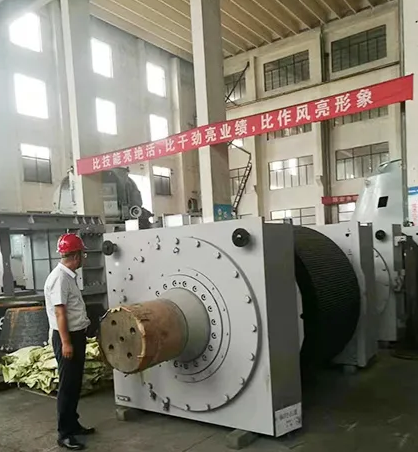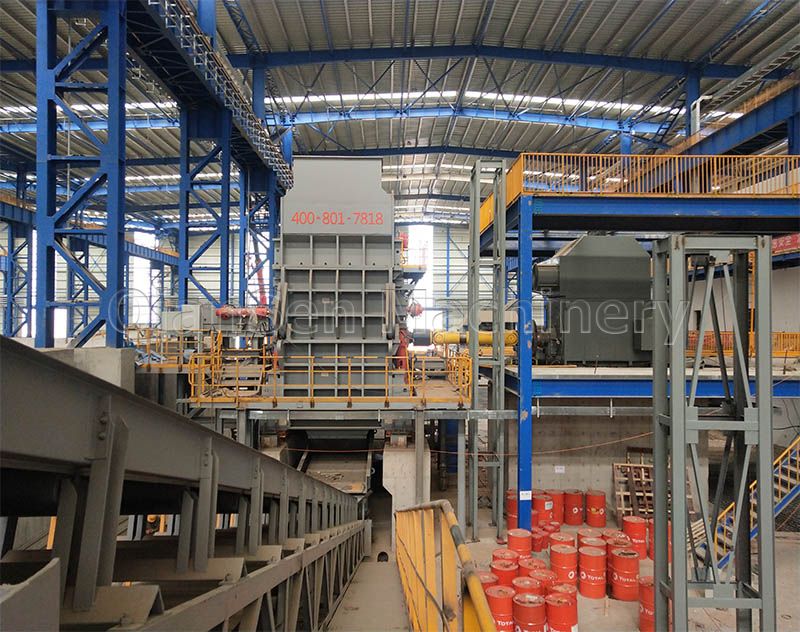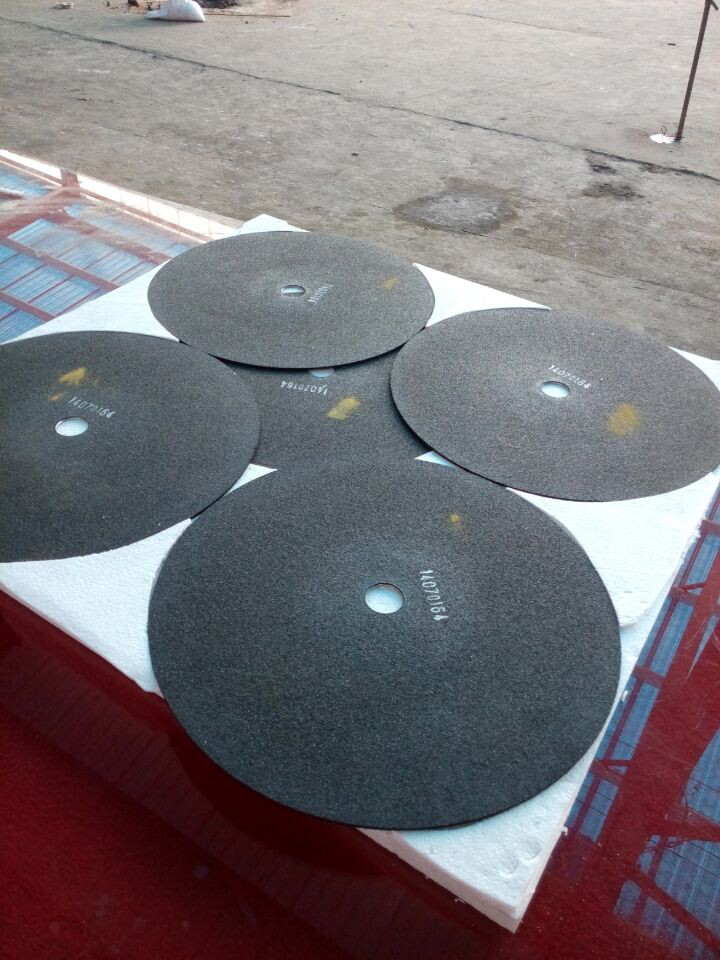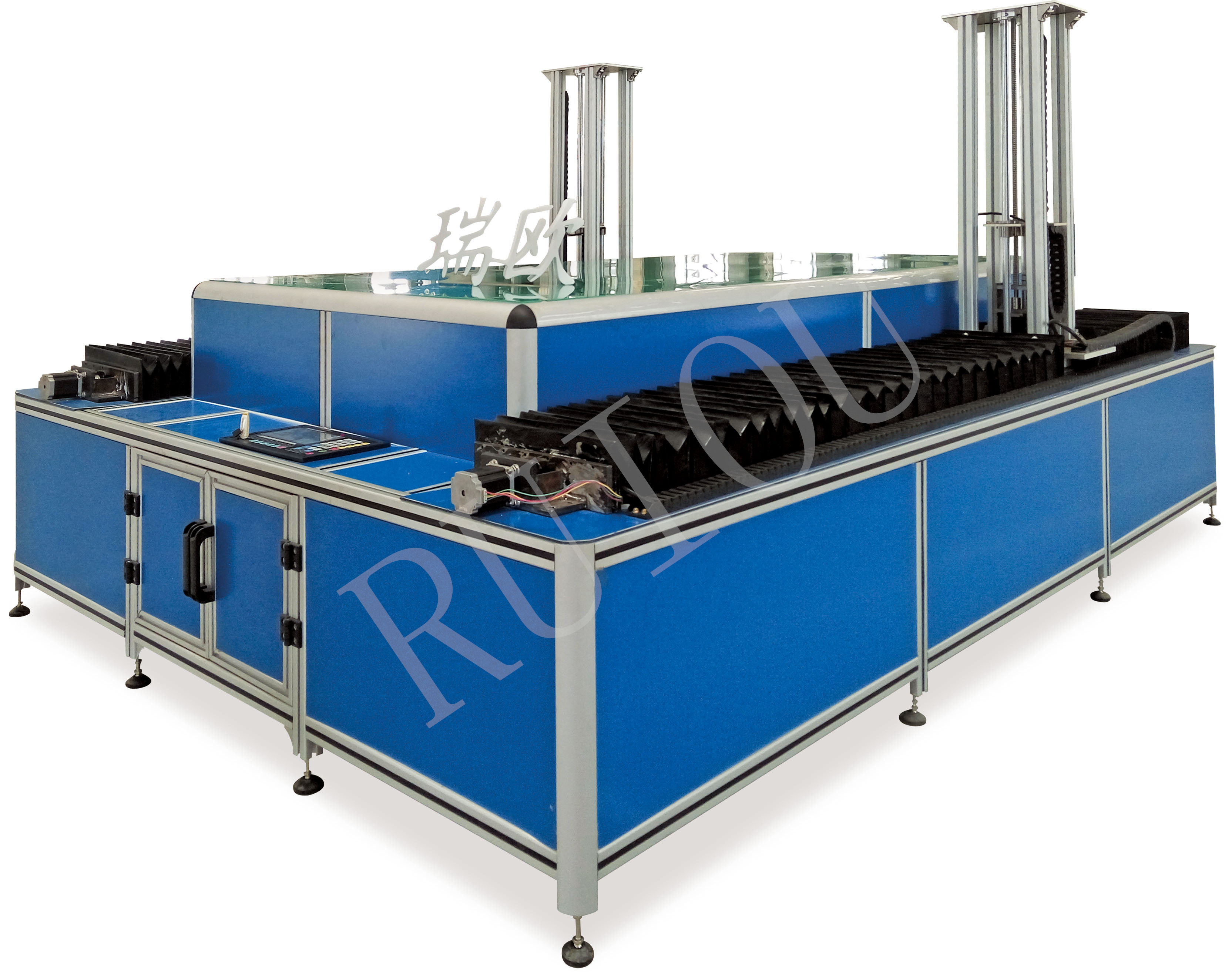What To Look For When Buying A Metal Cutting Bandsaw
In the engineering workshop, no matter what size it is, the chances are you will need a metal cutting bandsaw. This is mainly for the cutting and sizing of your stock. You can of course on certain bandsaws produce intricate shapes for sculpting and architecture.
There are many, many different bandsaws available on the market today and so finding the right one for your needs can be difficult. This guide will try to help you in this by going through what key features you should look for, as well as how they will benefit you.
Why do you need a Metal Cutting Bandsaw?
Now some of the traditionalists out there may argue that a hacksaw will suffice, but if you are sizing large amounts of metal, you can't beat the speed and accuracy a metal cutting bandsaw brings. Not to mention the lack of physical exertion.
For the hobbyist, you may wonder if the initial outlay is worth it, and that will depend entirely on how much you need to cut. For those of you who work in fabrication workshops, they are vital and that's where some key features come into play.
Horizontal or Vertical?
Although vertical bandsaws are very much associated with woodworking, they can still have their place in the engineering workshop. This will mainly be in workshops where intricate or curved work needs to be done, as well as sheet work. Smaller workshops will also benefit from vertical models, due to the smaller footprint that they have.
Horizontal bandsaws are definitely what you think about when talking engineering. Although they can't do the intricate shaped work that vertical models can, the accuracy and ease that you can cut stock makes them invaluable for the busy workshop.
Key Considerations
Before you jump straight in and buy, it's best to think about your needs and requirements. If you can put a list together, this will certainly narrow down the selection of bandsaws available.
- The amount of work - This will determine firstly if you need a bandsaw. If you're going to be doing very little work, do you really need to dig into your pockets to buy one? Secondly this will determine the size/power of the model you need to buy.
- Workshop space - Always a defining factor on your purchase. Try and buy as big a machine as you can fit into your shop, as you never know when you'll need to something bigger!
- Size of the job - Will ultimately affect the size of the machine you need. Try to think of the biggest task you will be doing, then add a little more to get the machine. This is so you won't be working at full capacity at all times.
- Type of job - This will decide if you need a horizontal or vertical bandsaw. Curved or intricate work will require a vertical model. Cutting of stock and straight cutting will need a horizontal version.
- Ease of use - Fabrication workshops will likely be looking for a saw with hydraulic downfeed and cut off switch. This is so the cut can be started, then the engineer can move onto other tasks before coming back to the saw.
- Budget - The bigger the budget, the larger, more powerful machine you will likely be able to buy. Depending on the age of the machine. Of course it's also good to consider extras such as blades and coolant.
What are the Key Features to Look For?
Depending on the size of the machine and the tasks you need to perform you may only be looking for one or two of these features, but here are a list of the key ones we think you need to look for...
Variable Speed
Different materials will require different speeds for optimum cutting. Some machines may come with a belt drive with three or four speeds which are good, but a variable speed is definitely preferable. Not only will these give you easy speed changing, but also great flexibility of use over many materials. With the overall benefit of making your blades last much longer.
Mitre Or Dual Mitre Cutting
Having this ability is what makes bandsaws stand out over powered hacksaws. A lot of processing, especially in the fabrication workshop will need to be angles and therefore mitre cutting is a necessity. Not just having mitre cutting, but accurate mitre cutting with a precise scale.
Dual mitre cutting is another great feature to have, especially good for workshops that have a multitude of cuts to do on non-symmetrical material. For people wanting a vertical bandsaw, this should be easily done with a standard mitre fence.
Rigid Construction
As with most engineering machinery, solid steel and cast iron construction are very important. This is so the machine can withstand the cutting forces put on it, as well as giving it vibration dampening qualities that will aid the accuracy of the cut.
Desirable features
These are great features that not every bandsaw will need but are certainly beneficial.
- Coolant system - For larger machines performing bigger cuts, having a coolant system is vital for prolonging the life of the blade. For smaller machines, it's great to have some available to spray on the job sporadically.
- Hydraulic downfeed - These are preferred over the basic spring systems, which are found on smaller machines. This is due to them offering a consistent blade pressure during automatic functioning.
- Swivel head over swivel vice - Some machines may come with swivel vices instead of swivel heads for mitre cutting. Although these are good, they won't provide the accuracy of the swivel head alternatives.
Coolant system on the UE-916A bandsaw
Hydraulic downfeed on the UE-812C bandsaw
Swivelling head assembly on the UE-153DV1 bandsaw
Blades And Accessories
An important factor in the performance of your metal cutting bandsaw will be the blades that you use. Most 'stock' metal cutting blades will come with a standard tooth count (6, 10, 14tpi). Although these blades will do an adequate job, it's best to get variable pitch teeth (6-10tpi or 10-14tpi). The variable teeth allow the blades to cut through almost any material. This is because while the finer teeth do the cutting, the coarser teeth then clear away the swarf, reducing heat build up.
Another great accessory especially for the larger workshop are roller stands. When cutting stock, these provide a stable structure that supports the weight of the material, whilst also making it easy to feed it into the vice. If you are doing round bar or tubular materials, a V Roller stand, is going to be your best bet. Finally, some coolant for putting onto the work is essential, to get the best finish, as well as prolonging your tool life.
Buying a metal cutting bandsaw is probably a bit harder than it first seems, with many things having to be considered. However, once you have done the research and found a machine that suits your needs, you will (with the correct maintenance) have a machine that will perform accurate cuts time and time again.
What is Fiber Laser Metal Cutting and Fabrication?
A fiber laser metal cutting machine makes cutting metal a snap. With a laser metal cutter, the types of projects you can take on and the ideas you can bring to life are virtually endless. We'll explain how laser metal cutting works, what to look for when choosing a new machine, and walk you through the features of OMTech's industry-leading FC fiber metal cutting machines.
Laser Metal Cutting and Fabrication Basics
Metal cutting is part of the metal fabrication process, which creates new metal structures, such as machines and component parts, by cutting, bending, and assembling metal into new shapes and formats. Industrial metal cutting machines are critical for precisely cutting thin sheets of metal to produce component parts for things we use every day, particularly electronics, automobiles, and medical equipment. Metal is also laser cut to create circuit boards, casings for wires, car doors, hub caps, and much more. In the medical field, laser-cut metal is used to make hospital beds and gurneys, as well as surgical instruments and orthopedic pins, rods, and plates.
But, despite their importance to the industrial sector, laser cutters aren't just for large, professional metal shops. Today's metal laser cutters are compact and budget-friendly, making them accessible for businesses of all sizes. Thanks to these technological advances, small businesses and hobbyists can now use laser metal cutters to create unique items like intricate signs and plaques, accurate model buildings, stencils, coasters, keychains, ornaments, and even jewelry.
Investing in a laser metal cutter to do your metal cutting in-house is a surefire way to boost your business. Not having to send metal out to be cut by a third party boosts your profitability and puts you in control of your projects' timelines, eliminating wait times that can slow production. Having a laser metal cutter in-house also allows you to take on new types of projects and expand your business offerings, which increases your long-term return on investment.
Fiber Lasers vs. CO2 Lasers
There are two major types of laser metal cutters: Fiber and CO2 lasers. Both use intense beams of light to cut through metal and are far more powerful and expensive than metal engravers. CO2 laser metal cutters use oxygen, mirrors, and glass tubes to create and direct their lasers. Fiber laser metal cutters don’t require a support gas because they use rare elements, like erbium, ytterbium, and neodymium, to create an optical laser.
In order to decide which is best for you, consider what types of metal you plan to cut. Each type of metal has different properties that impact how it can be cut. CO2 lasers are excellent for cutting steel and stainless steel but can have trouble cutting aluminum and brass, which are both highly reflective. Fiber lasers are more powerful than CO2 lasers, so they can easily cut through most metals, and are especially good at cutting copper and aluminum.
Since CO2 lasers tend to be cheaper than fiber lasers, they are an excellent choice for small businesses and hobbyists planning to laser etch steel or stainless steel. If you want to cut a larger variety of metals, or need smaller and more precise cuts, a fiber laser may be worth the investment.
What to Look for in a Laser Metal Cutter
Additional resources:How Are The Chips Packing Machine Working?
What is an anodizer machine?
Efficiency Unveiled: How Vacuum CVD Systems Revolutionize Coating Applications
How much does a fiber laser cutting machine cost?
Unveiling the Secrets of PDC Drill Bits: Powering the Modern Age of Drilling
Blow Molding Machine Buying Guide
How do you package powder products?
Whether you're cutting metal sheets, pipes, or stainless steel and aluminum rods, there is a laser metal cutter made for the task. There are four key factors to consider when choosing a laser fiber metal cutter: Working area, laser power supply, laser speed, and warranty and service offerings:
Working Area:
Also known as bed-size, this is the size of the actual table used for cutting metal. Choose a working area that is large enough to fit the size of the metal you are working with but not so big that it is outsized for your space or needs. Make the most of the cutting surface by choosing an open-faced table model.
Laser Power Supply:
The higher the laser's power supply wattage, the more power the laser will have to cut through metal. More powerful fiber laser metal cutters come with higher price tags, so look for one that meets but does not exceed your needs so that you're not paying for more power than you'll actually use.
Laser Speed:
Laser speed is important to your productivity when cutting metal, but the laser's speed and power supply must be matched so that one does not outpace the other, which could damage the metal you are cutting.
Warranty and Service:
Protect your investment by choosing a reputable company that provides training on its machines and backs up its products with a substantial warranty and expert-level technical support.
Top Fiber Laser Metal Cutters
Based in Southern California, OMTech is an industry leader in fiber laser metal cutting. Each machine in its FC fiber laser metal cutter line offers a large working area and uses sawtooth working tables to ensure stability. OMTech's lasers are powerful, fast, precise, and efficient. With a range of 1.5 kilowatts (kW) to 3 kW, they are powerful enough to cut through stainless steel up to 8 mm thick.
OMTech uses German-manufactured IPG lasers, which have a high-quality beam, operate at a high frequency, and use high-quality materials. Unlike the Lightburn software found in other laser metal cutting machines, OMTech machines use Cypcut software. Cypcut dramatically simplifies complex machine operations and makes it easy to draw and cut a piece in just a few clicks. Importantly, Cypcut software allows you to nest your work before you cut so you can manipulate your project's design to optimize cutting space and avoid wasting materials. It also automatically optimizes errors when importing drawings, deleting duplicates, and smoothing curves to ensure you get a perfect cut.
OMTech's fiber laser metal cutters are built with safety and durability in mind. They are corrosion-resistant and include a smoke filtration system and transformer. They are also designed to be adapted to meet your particular needs. With OMTech, you can customize the laser strength and type for your machine and choose open- or closed-bed models to create the right fit for you.
Here is a snapshot of the features and capabilities of four machines in OMTech's FC fiber laser metal cutter line:
-
OMTech FC-105C:
This is the most cost-effective fiber laser metal cutter on the market for light metal fabrication. Its compact, all-in-one open-bed table configuration offers a 3 m x 1.5 m cutting area, a cutting speed of 666 mm/s, a precision of +/-0.05 mm, and the capacity to easily cut up to 12 mm of carbon steel sheets with its 1.5 kW IPG fiber laser.
-
OMTech FC-44:
If space is at a premium, the compact OMTech FC-44 is the machine for you. While it gives you a smaller footprint with its 1.3 m x 1.3 m sawtooth work-bed area, it does not skimp on highly precise metal processing. With a powerful IPG laser strength range of 1.5 kW to 3 kW, cutting speeds of 1333 mm/s, and a precision of +/-0.05 mm, the FC-44 can be used for light to medium-heavy metal fabrications, and is perfect for small to medium metal fabrication.
-
OMTech FC-105:
The most sought-after of the line, the OMTech FC-105 is of such high quality that it meets aerospace standards. It features a large, open-bed table with a 3 m x 1.5 m cutting area and also delivers lightning-fast cutting at 1333 mm/s with a precision of +/-0.05 mm. Designed to be customized for a variety of metal fabrication purposes, you can choose from a 1.5 kW or 3 kW IPG laser.
-
OMTech FC-510:
OMTech's top-end option for heavy metal fabrication, the FC-510, builds on the FC-105's flagship features to create a powerful and elegant machine designed to
maximize safety. Its fully enclosed machine encapsulates debris and sparks while its pull-out platform makes it easy to get materials in and out of its 3 m x 1.5 m cutting area.
Why Choose OMTech
In addition to offering top-of-the-line quality and technology, OMTech backs up its products with outstanding customer support. When you buy from OMTech's FC line, you get free installation and three days of on-site training for your new machine.
OMTech also offers a top-notch warranty on its products, including lifetime, US-based technical support from experienced professionals. You also get a 30-day money-back guarantee and a two-year, full-service, bumper-to-bumper warranty to give you peace of mind and ensure you get the most out of your investment. With its easy financing program, which allows you to pay in installments, OMTech helps you put your new fiber laser metal cutter to work for your business right away.
Contact OMTech to learn more about its FC fiber laser metal cutter line and see how it can help your business soar.
What To Look For When Buying A Metal Cutting Bandsaw
How to Choose a Fiber Laser Metal Cutting Machine
Additional resources:How to Build a 3D Welding Table
The Inner Workings of a Production Freeze Dryer
High Pressure Pulse Dust Collector vs High Pressure Pulse Bag Filter Dust Collector
Harnessing the Power of Ozone Generators: A Deep Dive into Applications and Benefits
How Does a Pellet Mill Work?
How to Choose Dewar Tank?
Is it worth buying a new gas boiler?








